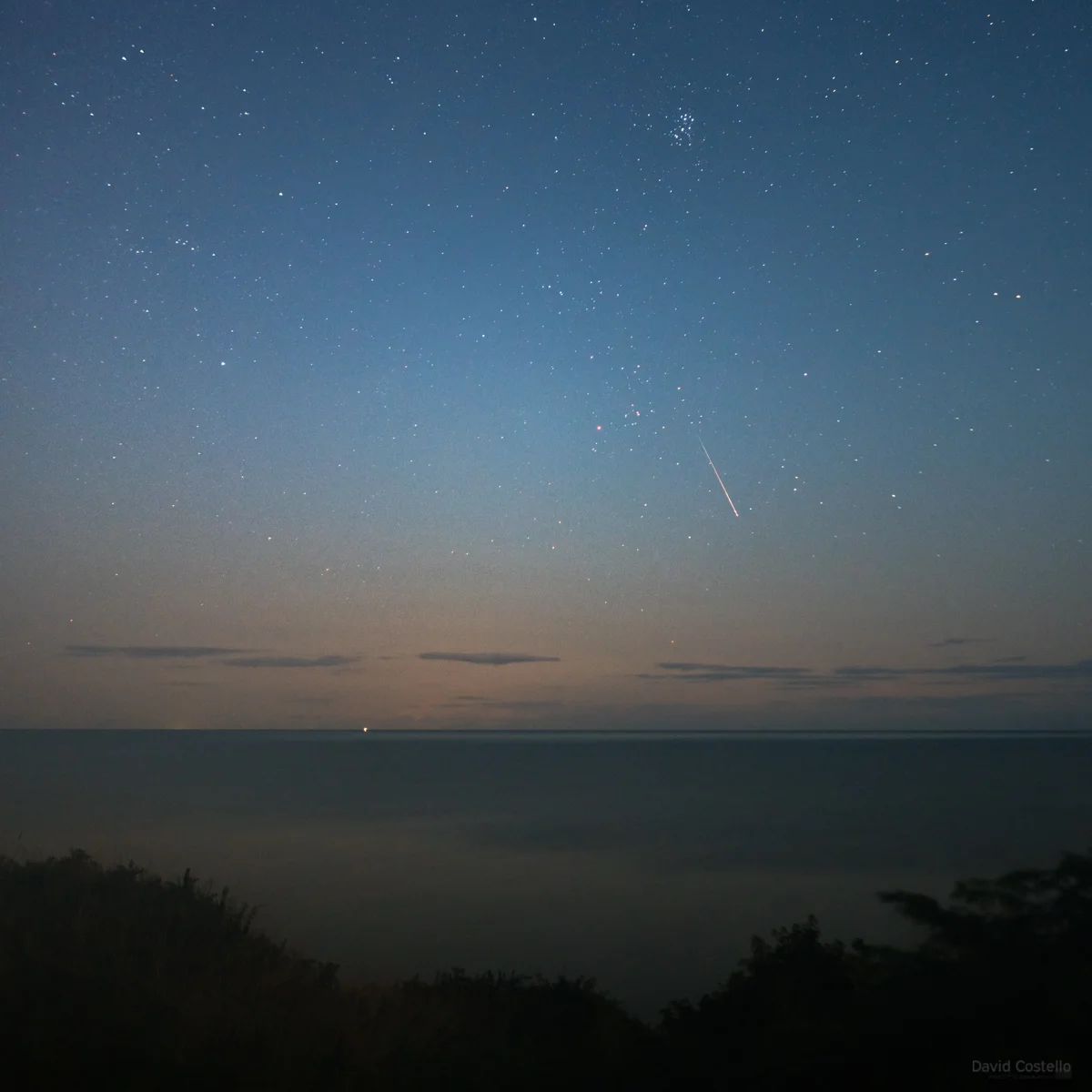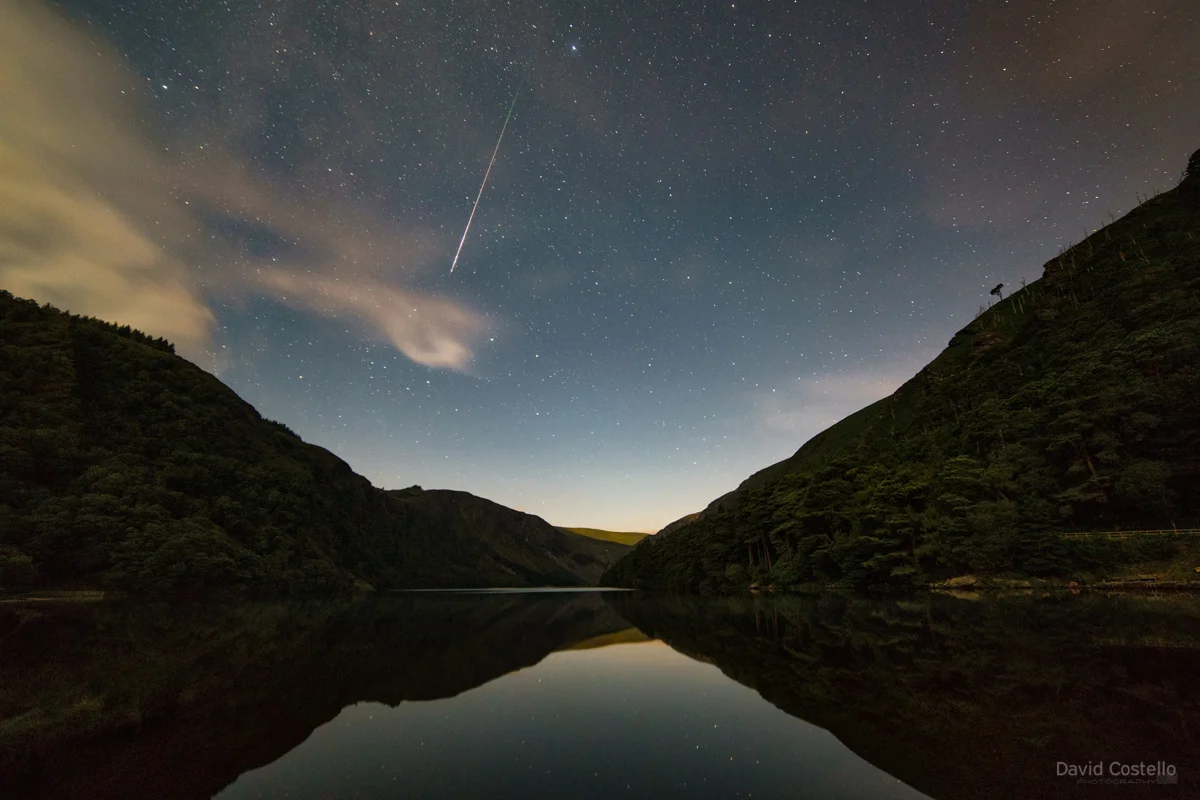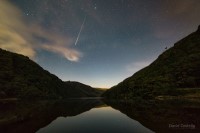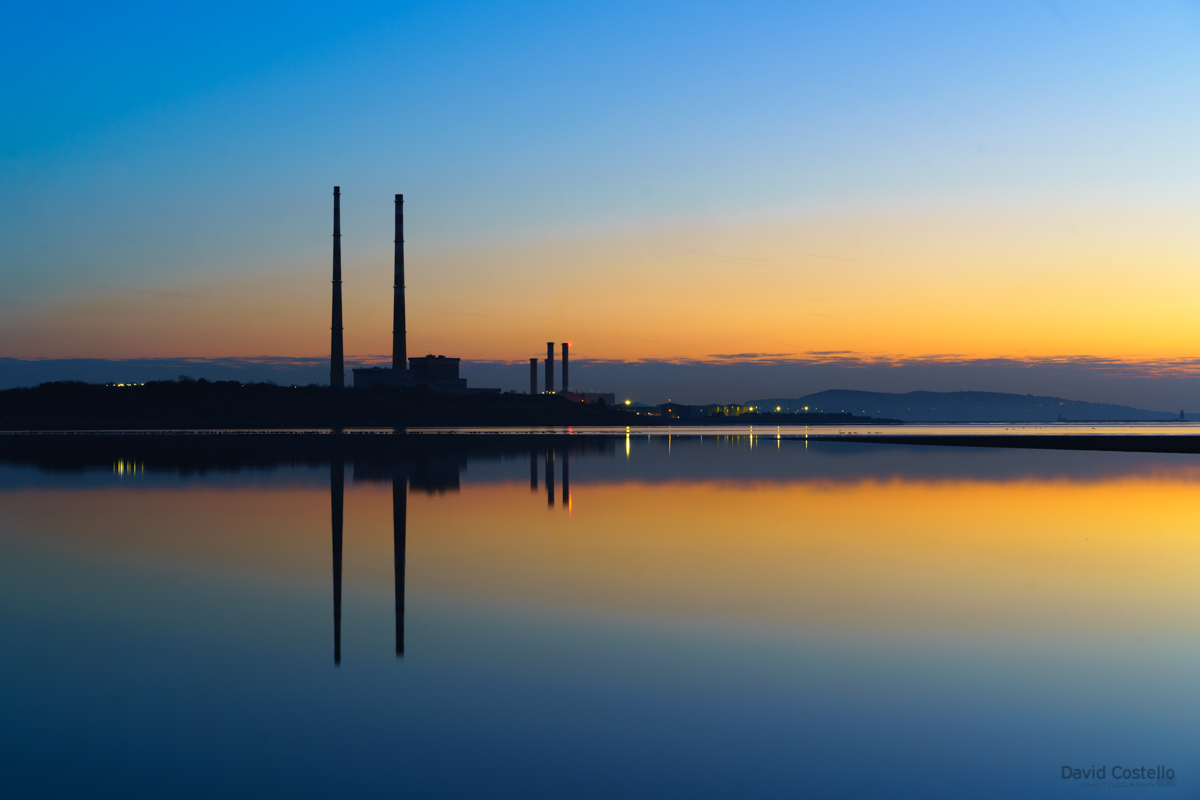The Perseid Meteor Shower is one of my favourite times of year — there’s nothing like escaping the city on a warm summer night to lie back and watch bright Perseids streak across a star-filled sky.
📅
Mark Your Calendar for the Peak
The peak of the Perseids this year is in the early hours of Wednesday, 13th August 2025 (so plan for the night of 12th → 13th August). At its best, the shower can produce up to ~100 meteors per hour under ideal, dark-sky conditions.
Important this year: a near full Moon (Waning 84.91%) will brighten the sky and wash out many of the faint meteors. The Moon rises on the Irish east coast at 21:58 on Tuesday 12th August and will be visible all night. The good news is that the brightest Perseids will still be visible — you’ll just want to take steps to block the Moon’s glare.
🌤
Weather outlook
Current forecasts show large breaks in the cloud across much of Ireland from Tuesday night into Wednesday morning — promising for meteor watching. As always with Irish weather, keep an eye on local updates and pick a couple of backup locations in case cloud shifts in the evening.
🌌
Where to look and how to shield the Moon
The Perseids radiate from the constellation Perseus, which sits in the north-east part of the sky. Look toward the north-east to catch the greatest concentration of meteors, but remember meteors can appear anywhere across the sky.
Because the Moon will be to the south this year, do not look south. Instead, position yourself so that a hill, building, or trees are blocking the Moon in the south, and then scan the sky to the north-east and upwards. Lie back, take in a wide field of view, and enjoy — the brightest Perseids will punch through the moonlit sky.
🌌
Extend the experience — nights to watch
If you can’t make the peak night, try the nights immediately before and after. The Perseids are active from late July until late August as Earth passes through the dust of Comet Swift–Tuttle. The closer to the 13th you are, the better the rates.
🔭
Tips for Optimal Viewing
To make the most of this enchanting event, check out the viewing tips and links provided below. Prepare to be mesmerized by nature's dazzling light show - the Perseid Meteor Shower awaits your presence under the starlit canvas.Below I have added some viewing tips for the shower and some links to help you along the way.
Viewing Tips for the Perseid Meteor Shower
1. Move as far from city lights and light pollution as possible.
2. Check the cloud forecast in the area you are planning to view from.
3. Dress in warm comfortable clothes, the clear summer nights are chilly!
4. Bring a sun lounger or blanket to sit on.
5. Bring a flask and some snacks.
Light Pollution:
It goes without saying that light pollution is one of the worst enemies for viewing the night sky, during a meteor shower only the brightest meteors can be seen from the city and the further you move away from bright lights will enhance your viewing experience. The West coast of Ireland is an ideal location with the Kerry International Dark Sky Reserve and many parts of westerly Galway and Mayo being perfect locations for viewing. If a trip out West isn't on the agenda there are many places within an hour of Dublin that the meteor viewing will be vastly improved. Try to find an open location with good clearance all around you, and preferably a view of the horizon to the East. Here is a link to a Light Pollution Map I use to help you find darker sky locations close to your area.
Cloud:
Checking the cloud forecast is the most important aspect of dark sky viewing, it is the reason I always have two or three locations set out a few days beforehand. Cloud is one of the hardest weather aspects to predict especially in Ireland! My personal format has always been to check the forecast 96 hours out to get an idea, then twice a day up until the day I plan to view. I won't go into the many weather charts I look over but I have added two links below to help along your way nearer the time of the shower. The first is of course is Met Eireann it is very easy to check the updated forecast on your chosen location. For a realtime cloud update on the day I'm planning to view the Perseids I use Sat 24, which is also good after sunset if there's a chance of some cloud as it has an infrared setting for some great sunset photography.

The Milky Way and a Perseid from Newcastle Beach in Wicklow.
Clothes:
It really does get quite chilly for some people on a clear summer night, warm comfortable clothes might not feel needed if it's 18c in Dublin at 9pm but it is a very different feeling at 2am in a valley in Wicklow or on the coast in Kerry. I usually wear a few layers that can be removed and added as needed.
Seating:
Looking up at the sky for so long does put strain on your neck, a sun lounger or blanket in an open space is perfect to lay back and watch the Perseid Meteor Shower. Remember the Perseids originate from the North East sky as Perseus rises around midnight but they can be seen all across the sky and before midnight you can be lucky enough to catch an "Earthgrazer" while the radiant if the shower is close to the horizon.
Drinks and Snacks:
In between taking photos there is nothing I like more than a starlight picnic! And a flask with a warm drink is perfect to keep the summer night chill out while enjoying the show.

A Perseid Meteor above the Irish Sea from Brittas Bay.






